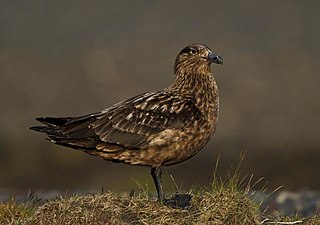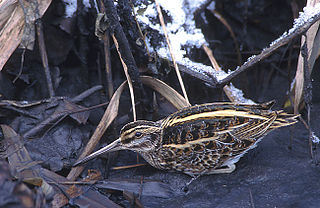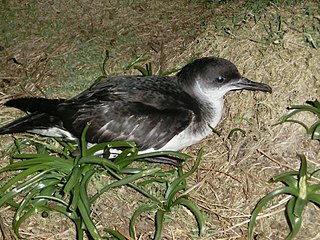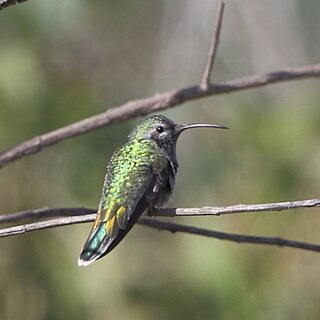 W
WThe American pygmy kingfisher is a resident breeding kingfisher which occurs in the American tropics from southern Mexico south through Central America to western Ecuador, and then around the northern Andes cordillera in the east to central Bolivia and central Brazil. The species occupies the entire Amazon basin and the Tocantins River drainage adjacent in Pará state Brazil. It also occurs on Trinidad.
 W
WThe barred antshrike is a passerine bird in the antbird family. It is found in the Neotropics from Tamaulipas, Mexico, through Central America, Trinidad and Tobago, and a large part of South America east of the Andes as far south as northern Argentina, Bolivia and Paraguay. There is one accepted record from southern Texas. It is found in a wide range of wooded habitats in both humid and arid regions. Throughout a large part of its range, it is among the most common antbirds.
 W
WThe citril finch, also known as the Alpine citril finch, is a small songbird, a member of the true finch family, Fringillidae. For a long time, this cardueline finch was placed in the genus Serinus, but it is apparently very closely related to the European goldfinch.
 W
WThe common loon or great northern diver is a large member of the loon, or diver, family of birds. Breeding adults have a plumage that includes a broad black head and neck with a greenish, purplish, or bluish sheen, blackish or blackish-grey upperparts, and pure white underparts except some black on the undertail coverts and vent. Non-breeding adults are brownish with a dark neck and head marked with dark grey-brown. Their upperparts are dark brownish-grey with an unclear pattern of squares on the shoulders, and the underparts, lower face, chin, and throat are whitish. The sexes look alike, though males are significantly heavier than females. During the breeding season, loons live on lakes and other waterways in Canada; the northern United States ; and southern parts of Greenland and Iceland. Small numbers breed on Svalbard and sporadically elsewhere in Arctic Eurasia. Common loons winter on both coasts of the US as far south as Mexico, and on the Atlantic coast of Europe.
 W
WThe European pied flycatcher is a small passerine bird in the Old World flycatcher family. One of the four species of Western Palearctic black-and-white flycatchers, it hybridizes to a limited extent with the collared flycatcher. It breeds in most of Europe and across the Western Palearctic. It is migratory, wintering mainly in tropical Africa. It usually builds its nests in holes on oak trees. This species practices polygyny, usually bigamy, with the male travelling large distances to acquire a second mate. The male will mate with the secondary female and then return to the primary female in order to help with aspects of child rearing, such as feeding.
 W
WThe great skua is a large seabird in the skua family Stercorariidae. It is roughly the size of a herring gull. It mainly eats fish which is taken from the surface of the sea or from other birds.
 W
WThe jack snipe or jacksnipe is a small stocky wader. It is the smallest snipe, and the only member of the genus Lymnocryptes. Features such as its sternum make it quite distinct from other snipes or woodcocks.
 W
WThe little grebe, also known as dabchick, is a member of the grebe family of water birds. The genus name is from Ancient Greek takhus "fast" and bapto "to sink under". The specific ruficollis is from Latin rufus "red" and Modern Latin -collis, "-necked", itself derived from Latin collum "neck".
 W
WThe little tern is a seabird of the family Laridae. It was formerly placed into the genus Sterna, which now is restricted to the large white terns. The genus name is a diminutive of Sterna, "tern". The specific albifrons is from Latin albus, "white", and "frons", forehead. The former North American and Red Sea S. a. saundersi subspecies are now considered to be separate species, the least tern and Saunders's tern.
 W
WThe malachite kingfisher is a river kingfisher which is widely distributed in Africa south of the Sahara. It is largely resident except for seasonal climate-related movements.
 W
WThe Manx shearwater is a medium-sized shearwater in the seabird family Procellariidae. The scientific name of this species records a name shift: Manx shearwaters were called Manks puffins in the 17th century. Puffin is an Anglo-Norman word for the cured carcasses of nestling shearwaters. The Atlantic puffin acquired the name much later, possibly because of its similar nesting habits.
 W
WThe pin-tailed whydah is a small songbird with a conspicuous pennant-like tail in breeding males. It is a resident breeding bird in most of Africa south of the Sahara Desert.
 W
WThe purple sandpiper is a small shorebird. The genus name is from Ancient Greek kalidris or skalidris, a term used by Aristotle for some grey-coloured waterside birds. The specific maritima is from Latin and means "of the sea", from mare, "sea".
 W
WThe ruddy shelduck, known in India as the Brahminy duck, is a member of the family Anatidae. It is a distinctive waterfowl, 58 to 70 cm in length with a wingspan of 110 to 135 cm. It has orange-brown body plumage with a paler head, while the tail and the flight feathers in the wings are black, contrasting with the white wing-coverts. It is a migratory bird, wintering in the Indian subcontinent and breeding in southeastern Europe and central Asia, though there are small resident populations in North Africa. It has a loud honking call.
 W
WThe sanderling is a small wading bird. The name derives from Old English sand-yrðling, "sand-ploughman". The genus name is from Ancient Greek kalidris or skalidris, a term used by Aristotle for some grey-coloured waterside birds. The specific alba is Latin for "white".
 W
WThe silver-beaked tanager is a medium-sized passerine bird. This tanager is a resident breeder in South America from eastern Colombia and Venezuela south to Paraguay and central Brazil, Perú and on Trinidad. It is common and conspicuous.
 W
WThe spotted flycatcher is a small passerine bird in the Old World flycatcher family. It breeds in most of Europe and in the Palearctic to Siberia, and is migratory, wintering in Africa and south western Asia. It is declining in parts of its range.
 W
WThe spotted redshank is a wader (shorebird) in the large bird family Scolopacidae. The genus name Tringa is the New Latin name given to the green sandpiper by Aldrovandus in 1599 based on Ancient Greek trungas, a thrush-sized, white-rumped, tail-bobbing wading bird mentioned by Aristotle. The specific erythropus is from Ancient Greek eruthros, "red", and pous, "foot".
 W
WThe western crowned pigeon, also known as the common crowned pigeon or blue crowned pigeon, is a large, blue-grey pigeon with blue lacy crests over the head and dark blue mask feathers around its eyes. Both sexes are almost similar but males are often larger than females. It is on average 70 cm (28 in) long and weighs 2,1 kg(4.6 lbs).
 W
WThe white-headed marsh tyrant is a small passerine bird in the tyrant flycatcher family, the only species of the genus Arundinicola. It breeds in tropical South America from Colombia, Venezuela and Trinidad south to Bolivia, Argentina and Paraguay.
 W
WThe white-tailed goldenthroat is a species of hummingbird in the family Trochilidae. It is found in Argentina, Bolivia, Brazil, Colombia, French Guiana, Guyana, Paraguay, Peru, Suriname, Trinidad and Tobago, and Venezuela. Large populations can be noted east of the Andes, from the Amazons to San Juan, and from east Columbia to northern Brazil, just north of the Amazon. Its natural habitats are dry savanna and subtropical or tropical seasonally wet or flooded lowland grassland.